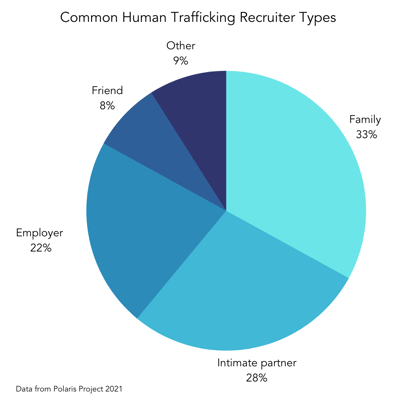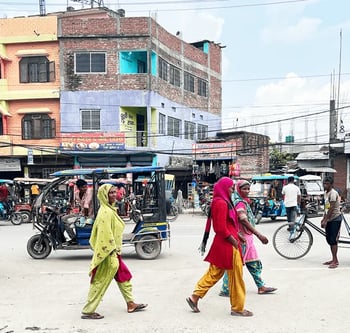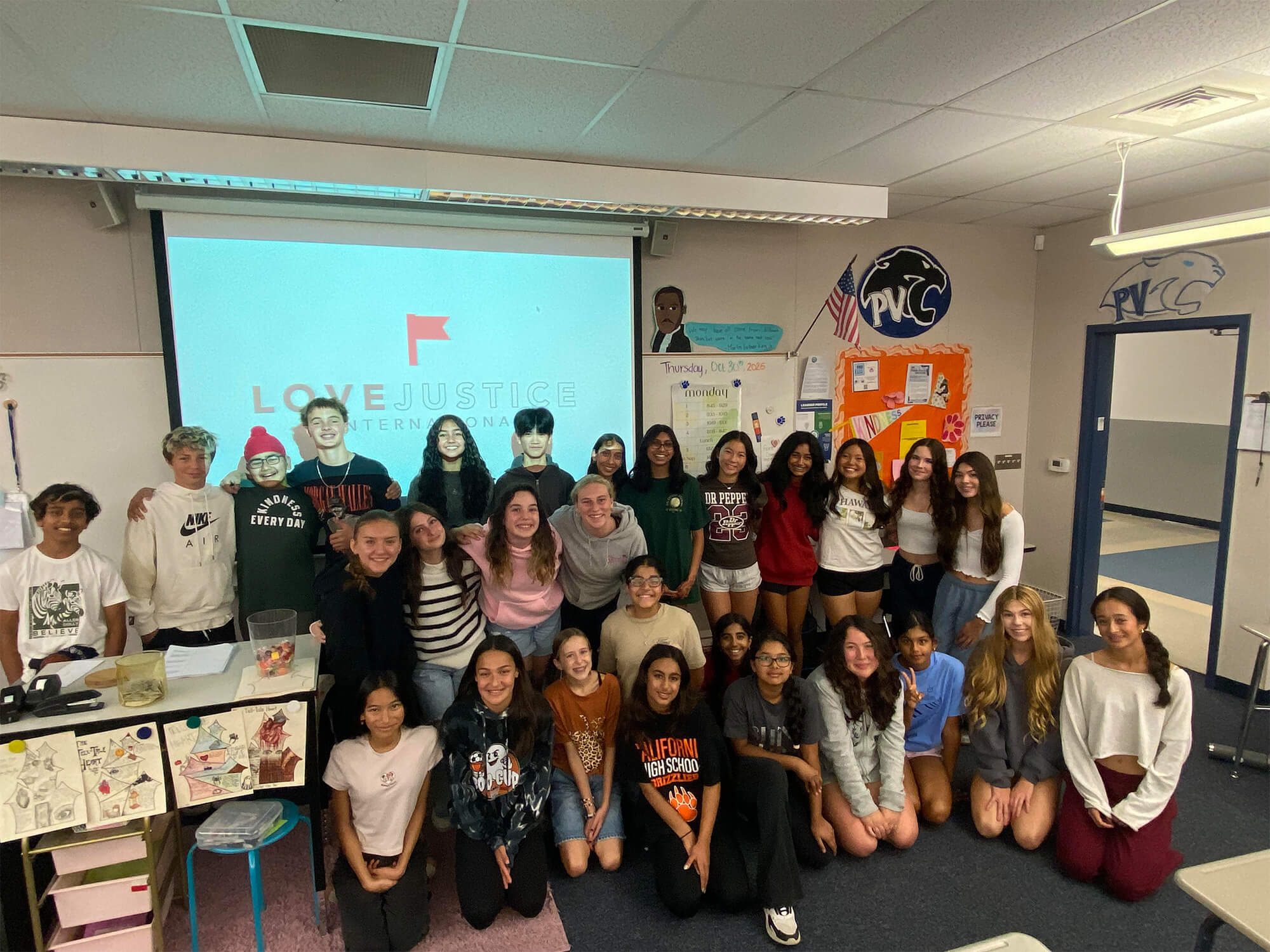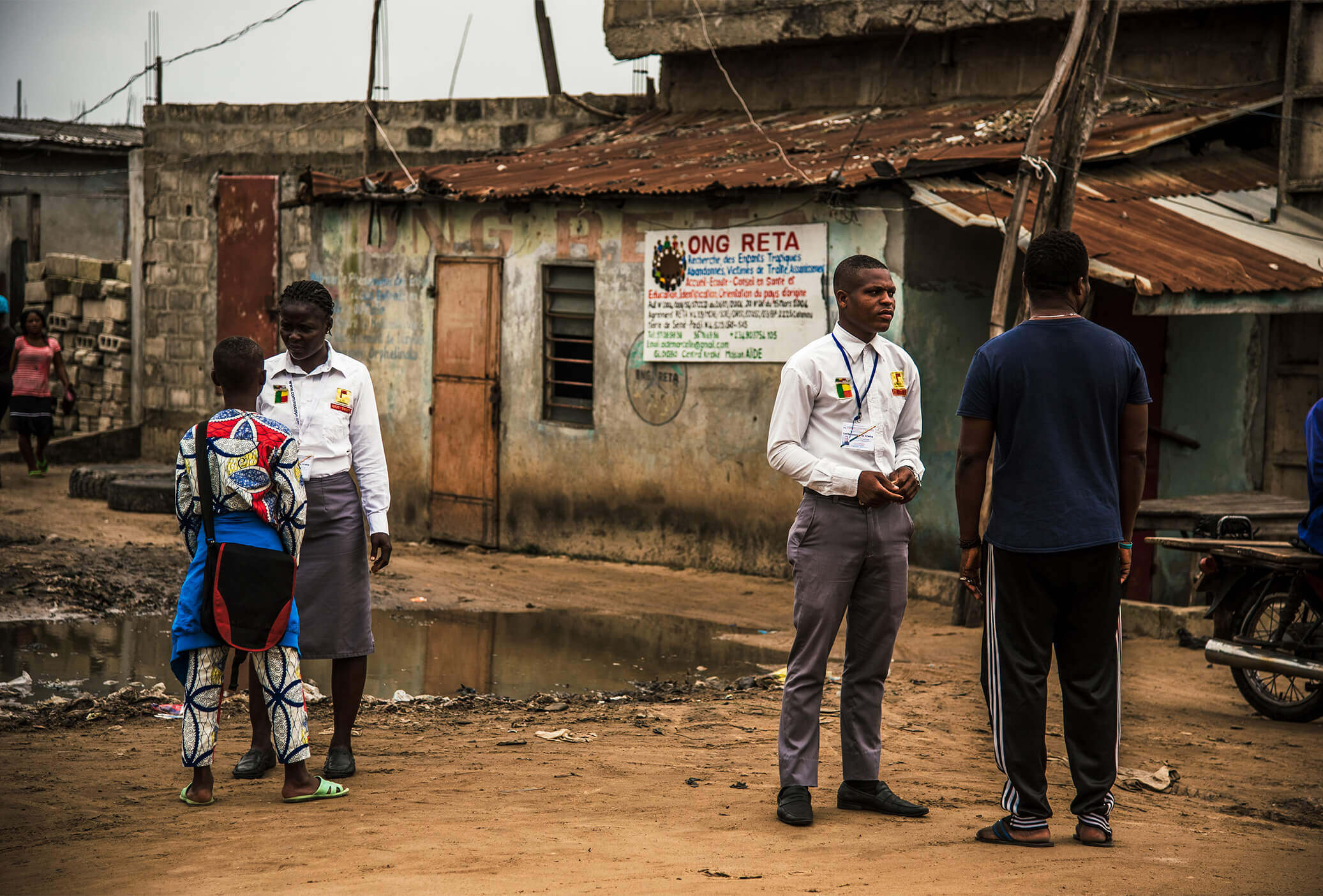“Why did you trust him?”
Her face is calm and steady on the other end of the WhatsApp video chat, but I can imagine her disappointment after the effort she’d put in to confirm that this would be a legitimate job opportunity.
“He talked a lot of sweet things…”
Victoria* was in college in Liberia and working part time as a reporter for her local radio station when a friend told her about a job doing housework in Oman where she could make twice as much and also attend university there. The friend was hosting a traveler he’d met recently who was looking for capable young girls to fill these positions abroad.

With her background in journalism, Victoria was skeptical at first. She researched the destination country and found that migrants were typically not treated well there. But when she brought it up to the recruiter, he claimed it was all lies.
“He put me on the phone with someone working there who claimed they were very happy. Now looking back, I think that call was pre-planned. It wasn’t real.”
When she arrived at her new job in Oman as a domestic helper for a family, she found the recruiter had lied about many things. She worked very hard, confined to the house without breaks, and her employers confiscated her passport so she could not leave.
The truth about recruitment
One of the most common misconceptions around human trafficking is that traffickers recruit their victims randomly, abruptly, and violently. It’s easy to picture a white “creeper” van, someone jumping out of the bushes to kidnap, or even stalking and marking cars with zip ties. While it’s good to be aware of your surroundings and report anything unusual, it’s also important to realize that most often, these examples are not how traffickers get their victims.

Traffickers are persuasive. They target and prey on vulnerabilities such as poverty, instability, or lack of community and most often use deception over time to gain a person’s trust—a process known as “grooming.” They may go through family members or present themselves as a friend or a lover, using intimate connections to aid their deceptions.
Polaris noted that most of the trafficked individuals in cases reported to the National Human Trafficking Hotline were recruited by someone they knew; 33% were recruited by a family member and 28% by an intimate partner.
Although Polaris only measures data from cases in the U.S., these statistics align closely with Love Justice data from the international field as well.
Recruitment tactics from the field
Here are some of the most common recruitment tactics used by traffickers that our teams have come across in recent years, along with a real life example of an interception involving that tactic. Click on the name to read their story. Sometimes multiple recruitment tactics are used at the same time, and this list is not comprehensive.
1. Promising a job: With so many people living in poverty, this tactic is the most common because it preys on a person’s desperation for a better life.
Saida* met a man who had befriended her aunt. He promised Saida a job as a domestic helper in another country and then drugged her on the journey before our monitors were able to intercept her.
2. Promising marriage: This tactic is a common way to lure young girls or any lonely person looking for acceptance and love.
Kalyani* fell for this kind of deception, falling in love with her older neighbor and running away from her family to be with him. Our monitors caught the man in his lies and returned her home safely.
3. Recruiting through friends: Traffickers know that a person will be more likely to trust a friend of a friend over a complete stranger.
Sabina’s* story started this way when she spent the evening with her friend’s relatives.

Traffickers recruited Kritika* by phone when one got her number in person and started calling her about a job. When she blocked the call, he gave her number to someone else.
5. Recruiting through family: Similar to friends of friends, a person will be more likely to trust a friend of family over a stranger.When a man approached two women and claimed to be a close friend of their husbands (who were working abroad), they desperately wanted to believe him.
6. Posting an online job: Again, this tactic preys on the vulnerability of poverty but can reach more people through the internet.

Senzo* and Ayanda* were both recruited this way, but our monitors were able to confirm that the jobs were illegitimate.
7. Meeting online: Commonly conducted through social media like Facebook and Instagram or through dating sites and apps, this tactic preys on lonely people.Meera* fell for this tactic when a boy on Facebook messaged her about her “beautiful smile.”
8. Approaching at work: This may go something like “Hey, you’re doing an excellent job; I know where you can make a lot more money than you’re making here.” The opportunity to improve one’s financial situation is hard to pass up.A customer nearly recruited Berhane* this way when he saw her bartending and began pressuring her to accept a much higher-paying job in Italy.
9. Promising an education: This is another opportunity that is hard to resist because it offers hope for people trying to get out of poverty.A grandmother struggling to care for her three grandsons trusted a trafficker who promised to help her by enrolling the boys in a good school far away.
The good news
Our transit monitoring strategy stopped each and every one of the traffickers in these stories! Our monitors are trained to intercept people BEFORE these recruitment tactics can work. Not only that, but our monitors also educate each person they intercept to help that person recognize these tactics on their own and prevent future trafficking situations for themselves and their loved ones.

Wondering what happened to Victoria, the college student mentioned at the beginning of this article? She is free now, too! After a failed escape attempt, she reached out to various NGOs and government officials for help and found her way home. Now she uses her experience as a transit monitor with Love Justice, helping to identify these recruitment tactics and warning people not to pursue suspicious opportunities, no matter how sweet-talking the trafficker is.
Join our work to help us place more monitors in strategic locations, finding and exposing trafficking recruitment tactics until human trafficking becomes a thing of the past! Together, we can end it.
Originally published November 2, 2023.
*All data and statistics current at the date and time of publishing. Names changed and some specific locations excluded for privacy and security purposes. Images are representative.
-1.png?width=500&height=500&name=LJI_MAINLOGO_WhiteBackground%20(1)-1.png)



/bimala_feature_blog.webp)


/boy_girl_asia_streets.webp)




/LJI_Hands_feature.webp)


/trafficking_benin_featured_image_size.webp)





/asia_brothel_girl.webp)
.jpg)






Post a comment